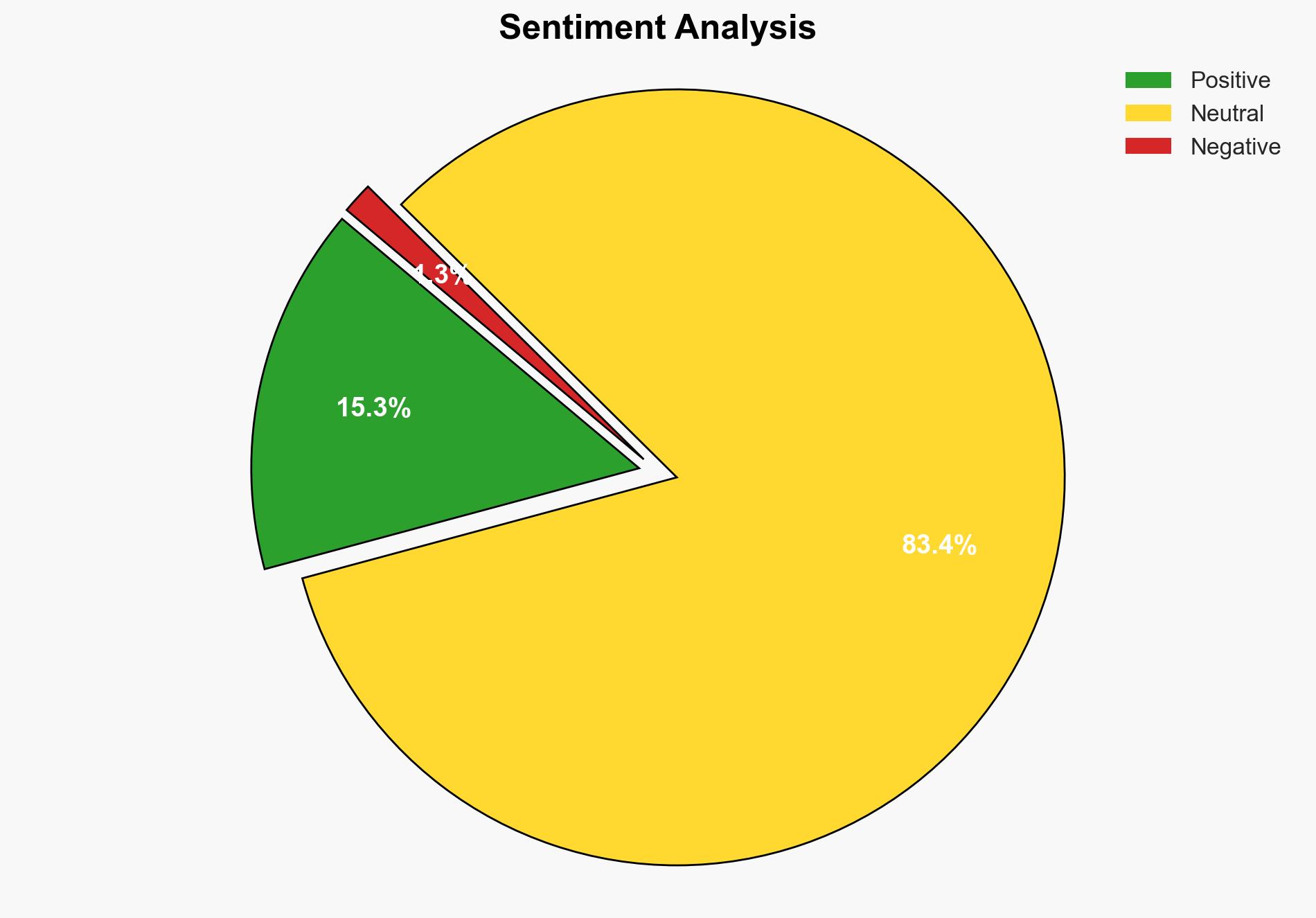Understanding Open Source Stewards and the Cyber Resilience Act – Eclipse.org
Published on: 2025-11-18
AI-powered OSINT brief from verified open sources. Automated NLP signal extraction with human verification. See our Methodology and Why WorldWideWatchers.
Intelligence Report: Understanding Open Source Stewards and the Cyber Resilience Act
1. BLUF (Bottom Line Up Front)
The introduction of the Open Source Steward role under the EU Cyber Resilience Act (CRA) represents a significant shift in regulatory expectations for open source projects. The most supported hypothesis is that the CRA will necessitate substantial adaptations in open source governance structures to align with regulatory requirements. Confidence Level: Moderate. Recommended action includes proactive engagement with regulatory bodies and the development of compliance frameworks tailored to open source environments.
2. Competing Hypotheses
Hypothesis 1: The CRA will drive open source projects to adopt more formal governance and security practices, aligning them with traditional software supply chains.
Hypothesis 2: The CRA’s requirements will be too rigid for the decentralized nature of open source projects, leading to potential non-compliance and friction between regulators and the open source community.
Hypothesis 1 is more likely given the structured approach outlined in the white paper and the proactive steps being taken by open source stewards to engage with the CRA framework.
3. Key Assumptions and Red Flags
Assumptions: It is assumed that the CRA’s requirements are adaptable to open source projects without fundamentally altering their collaborative nature. There is an assumption that open source stewards will have the resources and willingness to comply with new regulations.
Red Flags: Potential resistance from the open source community due to perceived overreach by regulators. The lack of a clear definition of roles and responsibilities could lead to inconsistent compliance efforts.
4. Implications and Strategic Risks
The CRA could lead to increased security and reliability of open source software, enhancing its trustworthiness in critical infrastructure. However, there is a risk of regulatory burden stifling innovation and participation in open source projects. Non-compliance could result in legal and financial penalties, damaging reputations and deterring collaboration.
5. Recommendations and Outlook
- Engage with EU regulators to clarify the role and expectations of open source stewards under the CRA.
- Develop a compliance framework that aligns with the decentralized nature of open source projects.
- Best-case scenario: Open source projects enhance security practices, gaining broader acceptance and integration into critical systems.
- Worst-case scenario: Regulatory requirements lead to decreased participation and innovation in open source projects.
- Most-likely scenario: A gradual adaptation to CRA requirements with ongoing dialogue between regulators and the open source community.
6. Key Individuals and Entities
No specific individuals are mentioned in the source text. Key entities include open source steward organizations, the EU regulatory bodies, and the broader open source community.
7. Thematic Tags
Cybersecurity, Regulation, Open Source, EU Policy
Structured Analytic Techniques Applied
- Adversarial Threat Simulation: Model and simulate actions of cyber adversaries to anticipate vulnerabilities and improve resilience.
- Indicators Development: Detect and monitor behavioral or technical anomalies across systems for early threat detection.
- Bayesian Scenario Modeling: Quantify uncertainty and predict cyberattack pathways using probabilistic inference.
Explore more:
Cybersecurity Briefs ·
Daily Summary ·
Support us





